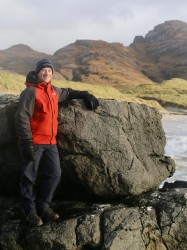BibTex format
@article{Cooke:2020:10.1144/geochem2019-039,
author = {Cooke, DR and Agnew, P and Hollings, P and Baker, M and Chang, Z and Wilkinson, J and Ahmed, A and White, NC and Zhang, L and Thompson, J and Gemmell, JB and Chen, H},
doi = {10.1144/geochem2019-039},
journal = {Geochemistry: Exploration, Environment, Analysis},
pages = {176--188},
title = {Recent advances in the application of mineral chemistry to exploration for porphyry copper–gold–molybdenum deposits: detecting the geochemical fingerprints and footprints of hypogene mineralization and alteration},
url = {http://dx.doi.org/10.1144/geochem2019-039},
volume = {20},
year = {2020}
}

